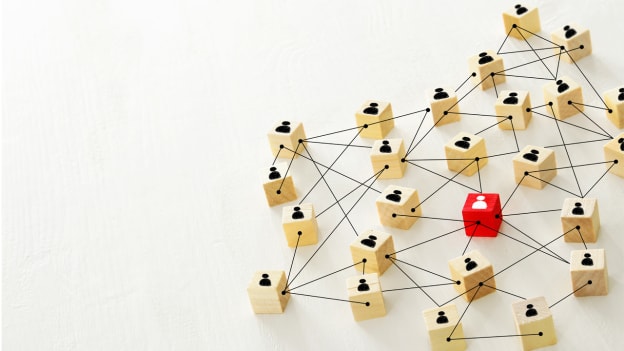From hierarchies to network: How should HR leverage the power of networked teams

With the rapid pace of technology change and a dynamic market, there is a disconnect between people and work. On one hand, there’s news of eleven million jobs being lost in India (2018) owing to the threat of automation. On the other hand, India features on a list of top ten countries with the fastest growing earnings for freelancers.
In fact, the idea of the ‘full time employee’ is changing. In Silicon Valley, the average permanent job lasts 17 months, while the average contract job lasts 18 months.
Clearly, a significant percentage of the workforce is choosing to engage as gig workers, even with economic slowdown looming large. In this context, organizations must be cognizant of employee expectations, which are increasingly following consumer-behaviour patterns, and threatening to change workplace models at large.
In a webcast, John Healy, Vice President and Managing Director, Office of The Future of Work KellyOCG spoke about the underlying drivers that are changing the world of work.
Understanding the shift in work
As countries like India, China and Japan are predicted to have the greatest potential impact of automation on their population. It is important to understand the impact on people, and listen to the questions they are asking. How is work shifting? How do we reskill workers? How do we repackage work? - The bottom-line is to rethink the ways of working.
For example, in analytics, historically data and linear analysis was the norm. Now with AI, and democratized algorithms, the potential to understand data patterns is much more robust as one can derive insights iteratively.
Ushering in a future-ready work ethic through design thinking
During the Second Industrial Revolution, it was not just about the electric motor replacing the steam engine that revolutionized work, but with recognizing the opportunity to distribute power differently. And so, the famously productive ‘assembly line’ was born.
In today’s Fourth Industrial Revolution, consumer-driven insights, and not organizational behaviour are driving new ways of working. As the end-user started coming forward about the things they could do themselves, design thinking has come into focus.
Traditionally, organizations have been good at laying out things structurally, but today, the user has the power to choose differently. For example, everyone in HR cares about the employee experience, but are we asking the right questions?
Are we thinking about who is being impacted by a process or policy? Making the process collaborative, cultivating creativity, inspiring curiosity, being empathetic and being limitless- design thinking is the art of the possible. The foundation of a networked organization flourishing with design thinking is ‘what was created needs to be broken.’
Yet, breaking the barriers of possibility is often met with resistance and fear, HR must handhold people into a “safe zone” where they are free to learn, ideate, explore and iterate. HR should play an instrumental in dissecting the status quo, and start making a deliberate shift towards a networked cultural norm.
The challenge- overcoming hierarchies
As people live the consumer-driven life, their expectations of the same ‘access’ and ‘availability’ is emerging within their work lives. Employees are expecting ease at work. Work systems do not support these expectations, and hence it is imperative to restructure and distribute work in a different way to bring transformational change, which will allow us to create new opportunities and new wealth not only for organizations, but for society as a whole. There must be a shift from political capital i.e. with an all-powerful person at the top, to social capital (Adaptive Space). This is the task HR must succeed at.
How to Become a “Networked Organization”
A truly networked organization is possible only if companies begin with the understanding of who everyone is, and where they fit in, in a connected world.
- HR must create the bridges or “points of connection”, which spark innovation. HR must identify and create these “network” roles (brokers, connectors, challengers, energizers) for people to become the “point of connection” between the business and the efficiency and resources. The Spotify Tribe Engineering Model is a live example to create the connections that involves senior people, all internal levels, as well as external talent.
- HR must actively work towards bringing diverse employee groups together. Educating employees about how the shifting of role is important because it will take time for people to get comfortable with change. Workplace design should support the change processes. For example: A company that had a strategic focus on blockchain created a workspace that attracted employees who were interested in Bitcoin, and traded bitcoin as an interest area. The company created a blockchain development project and invited people to volunteer.
HR leaders must take the time to understand what their employees’ personal passions are. Some questions to ask are:
● What is driving peoples’ interests?
● What will create opportunity and drive growth inside the organization and inside the marketplace?
● How can we start bringing those ideas together and experiment with different ways to get things accomplished?
The focus on empathy is also critical. They should listen, seek feedback, and help employees understand the nuances of what is happening differently. This is especially needed in cultures where people have been trained to live and operate strictly in the hierarchy. And it cannot happen suddenly. What organizations want is not a mere “yes” but networked insights on how everyone can be in it for the better. Taking people through a cultural shift is a time-engaging and elaborate process from awareness to training to hardwiring of systems and processes. Equitability is the outcome of making people open up, and that must be the leadership imperative to build a truly networked organization.










